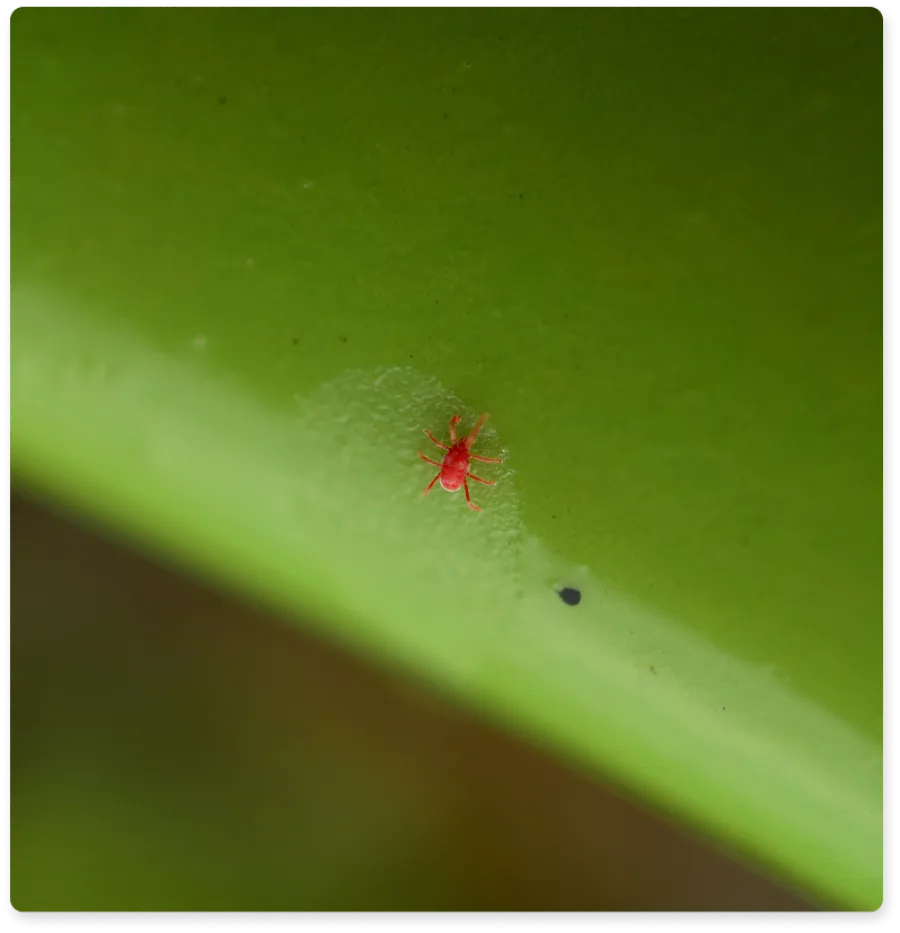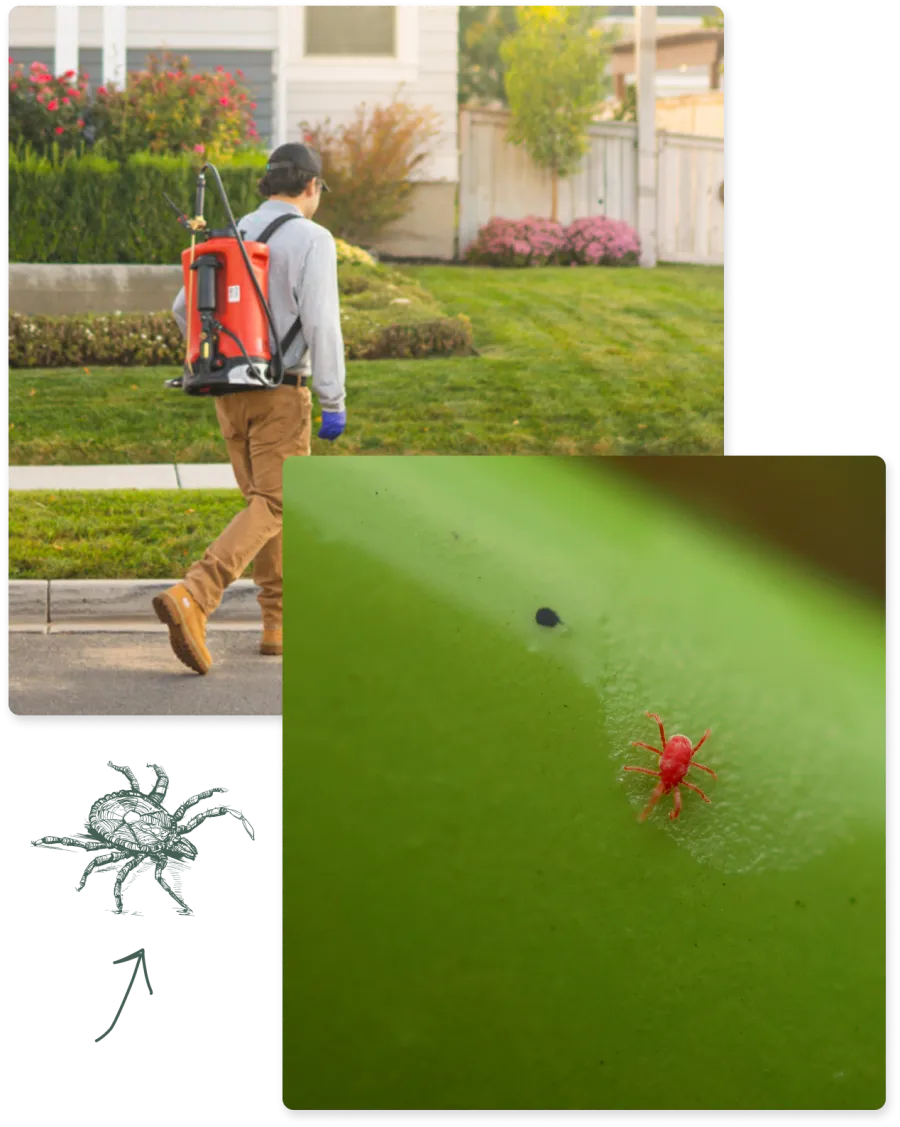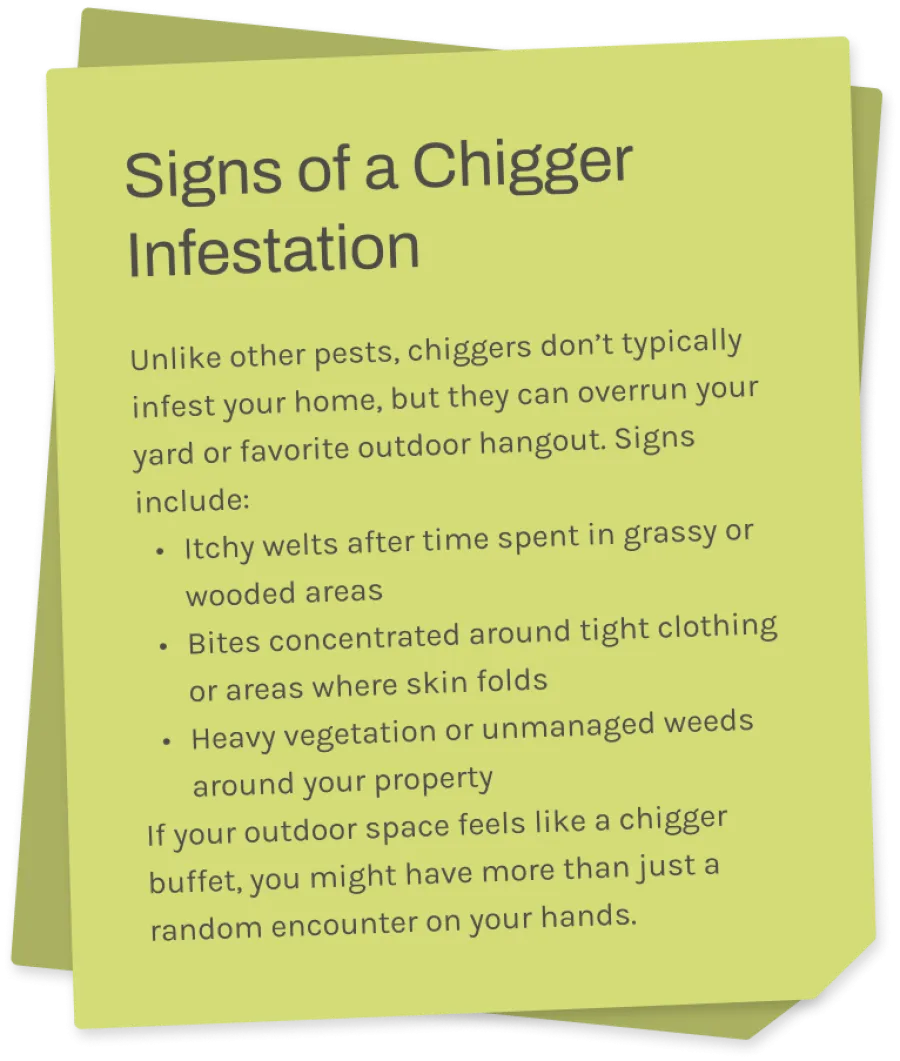The Invisible Itch
Chiggers

Identification: What Do Chiggers Look Like?
Spoiler alert: You'll probably feel chiggers before you ever see them. That's because these tiny terrors are larval mites, usually measuring less than 1/150th of an inch. They're bright red or orange, but you'd need a magnifying glass to spot them.
If you've ever returned from a nature walk covered in mysterious, itchy red bumps, you've likely crossed paths with chiggers. These nearly invisible pests pack a seriously annoying punch, one that keeps you scratching for days. But don't worry! We're here to break down what you're dealing with, why DIY doesn't cut it, and how Greenix can help you say "so long" to these tiny insects. They typically congregate in tall grass, brush, or weedy areas, basically, anywhere that screams "picnic spot" or "nature trail."

What’s on the Menu? Chiggers’ Food Choices and The Dangers of Chiggers
While adult chiggers snack on plant material and insects, it's the larvae that make life miserable for humans. Despite popular myth, chiggers don't actually burrow into your skin, but they do inject digestive enzymes that break down skin cells, and then they slurp up the resulting skin soup (gross, we know). In short: You're not their home, you're their buffet.
Chiggers aren't as dangerous as ticks or mosquitoes, but they can be frustrating. Here's what they bring to the table:
Intense itching: Bites can itch for up to a week, often becoming inflamed or infected if scratched too much.
Red welts or bumps: These typically appear in clusters, especially in warm, sweaty areas such as the ankles, waistbands, or behind the knees.
Secondary infections: Scratching can break the skin, allowing bacteria to enter.
Ask The Pest Experts
Do chiggers burrow into my skin?
Nope! That's a myth. They stay on the surface and inject enzymes that cause intense itching.
Where are chiggers most commonly found?
Can chiggers live in my house?
Not usually. They don't survive well indoors and tend to die off quickly without access to the outdoors.
How can I protect myself from chiggers?
Wear long sleeves and pants in grassy areas, use insect repellent, and shower immediately after being outdoors.
How do I get rid of chiggers in my yard?
Call the Pest Nerds at Greenix. We'll identify the source, treat your yard, and help prevent future infestations with our proven seasonal pest control services.

Signs of a Chigger Infestation and Why DIY Isn't the Answer for Chiggers
Unlike other pests, chiggers don't typically infest your home, but they can overrun your yard or favorite outdoor hangout. Signs include:
Itchy welts after time spent in grassy or wooded areas
Bites concentrated around tight clothing or areas where skin folds
Heavy vegetation or unmanaged weeds around your property
If your outdoor space feels like a chigger buffet, you might have more than just a random encounter on your hands.
We get it. Grabbing some bug spray seems like an easy fix. But when it comes to chiggers, DIY solutions often fall short:
Too small to detect: You might be treating the wrong area entirely.
Ineffective over-the-counter sprays: Many don't target chigger larvae effectively.
Short-lived results: Most DIY methods only treat the surface, not the life cycle.
At Greenix, we use targeted, environmentally responsible treatments that eliminate chiggers where they live, not just where they bite. And we'll help make your yard unwelcoming to their creepy crew.
Say Goodbye to the Itch with Greenix
Chiggers might be tiny, but the misery they cause is huge. Whether they've turned your yard into a pest zone or you just want to make sure they never show up in the first place, Greenix has your back. Our team is ready to help you reclaim your outdoor space from the relentless bite of these itchy invaders. Call in the Pest Nerds and kick chiggers to the curb.


Take Back Your Peace of mind
Trust the Pest Nerds, That’s Us.
Have questions about getting rid of pesky nuisance pests? Want to get an appointment scheduled for fast service? Please give us a call here or contact us for your free quote.
